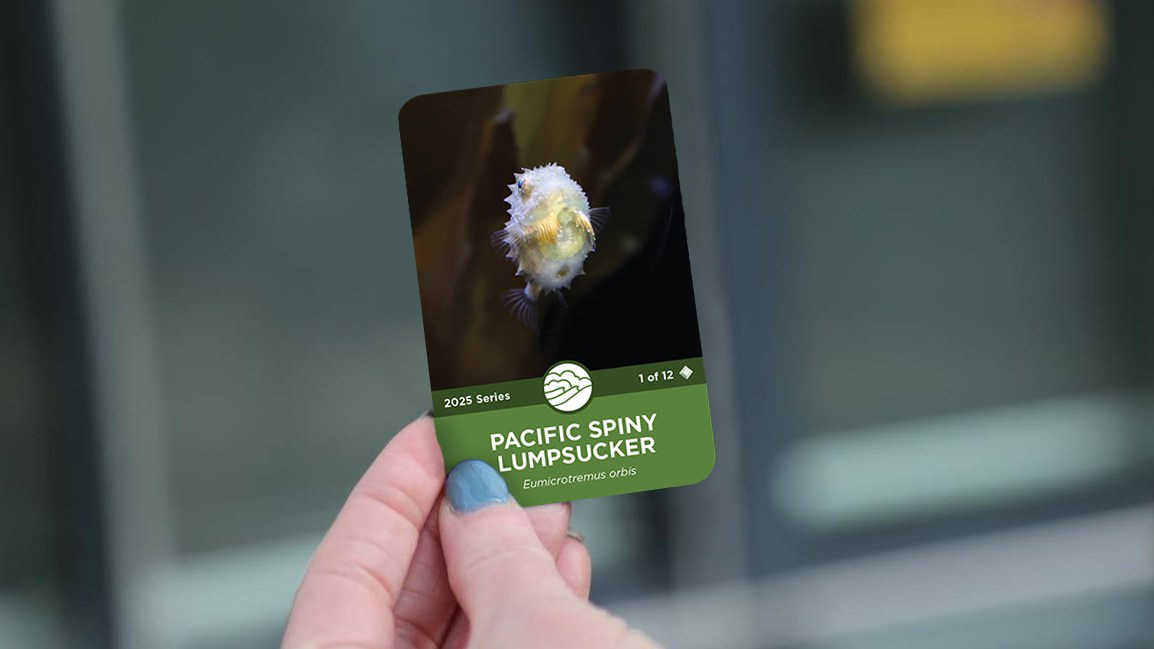- Introduction to Pacific Spiny Lumpsucker and its ecological significance.
- Aquariums’ role in wildlife education and conservation.
- Trading card initiatives as tools for public engagement and education.
- Detailed description of the Pacific Spiny Lumpsucker’s biology and habitat.
- The importance of biodiversity conservation and public awareness.
The Pacific Spiny Lumpsucker, Eumicrotremus orbis, holds a special place in marine biodiversity. This peculiar fish, with its round, spiny body and suction disc, fascinates both researchers and aquarium enthusiasts alike. Despite its amusing appearance, the Pacific Spiny Lumpsucker serves a critical role in its ecosystem. By understanding this species, we can also appreciate the broader challenges faced by many marine creatures.
Aquariums around the world are not merely entertainment destinations; they are pivotal in wildlife conservation and education. These institutions create environments where people can explore underwater life and learn about species such as the Pacific Spiny Lumpsucker. Aquariums provide insights into complex marine ecosystems, offering firsthand experiences that promote awareness and inspire conservation efforts.
Recently, trading card initiatives at aquariums have emerged as innovative educational tools. From Memphis to Monterey, trading cards featuring animals like the Pacific Spiny Lumpsucker capture attention, spark curiosity, and foster long-lasting interest in marine life. These cards become educational resources, providing snippets of information that visitors can take home and reflect on long after their visit. Projects like these are instrumental in reaching a wider audience, particularly children, who are the future stewards of our planet.
The Pacific Spiny Lumpsucker is found in the cold waters of the North Pacific. Its name comes from the small suction disk located beneath its body, enabling it to cling to rocks and other surfaces. The species is renowned for its distinctive look: a spherical shape covered in bony tubercles. Typically, Spiny Lumpsuckers inhabit kelp forests and rocky areas, where they can camouflage themselves against predators. Their diets mainly consist of small invertebrates, which they catch using their surprisingly agile swimming capabilities.
Although the Pacific Spiny Lumpsucker seems abundant, climate change and environmental degradation pose significant threats to its habitat. Rising ocean temperatures and pollution threaten kelp forests, essential not just for lumpsuckers but for myriad marine species. Conservationists emphasize the protection of such habitats, which encompass high biodiversity and offer direct benefits to human communities, including carbon sequestration and fishery resources.
Efforts in public engagement, like the trading card programs, play a crucial role in biodiversity conservation. By distributing Pacific Spiny Lumpsucker cards, aquariums encourage guests to delve into the lives of these remarkable creatures. This connection often translates to increased support for conservation initiatives both financially and through advocacy. Educating the public about the roles these species play in ecosystems is a crucial step towards deeper environmental respect and responsibility.
Understanding the biology and ecology of the Pacific Spiny Lumpsucker involves breaking down complex scientific concepts for broader audiences. The fish uses its suction disk to stay anchored in turbulent waters, showcasing a fascinating adaptation. Such behavior underlines the importance of specific habitat conditions for their survival. Spiny Lumpsuckers are also indicative of healthy ecosystem dynamics, serving as a reminder of how interconnected nature truly is.
Biodiversity conservation is a global challenge, requiring combined efforts from scientists, lawmakers, educators, and the public. Innovative programs like distributing trading cards at aquariums offer a window into the diverse and colorful world of marine life, of which the Pacific Spiny Lumpsucker is a part. By becoming educated on topics like the threats these species face and their ecological niches, the public can take informed actions in support of sustainable environmental practices.
The message that aquariums and institutions like them are conveying is clear: engaging with marine life leads to an internalization of conservation values. The push for biodiversity conservation is as much about scientific endeavor as it is about public awareness and community involvement. As people collect and learn from trading cards, they become part of an ongoing movement to preserve marine life and, by extension, our planet.
*****
Source Description
No jokes, just a reminder that you can get a free Pacific Spiny Lumpsucker trading card at the Available through April 7, you can ask for yours at Aquarium admissions!
Find our trading card schedule at aquarium.org/trading-cards 🃏(link in bio)


